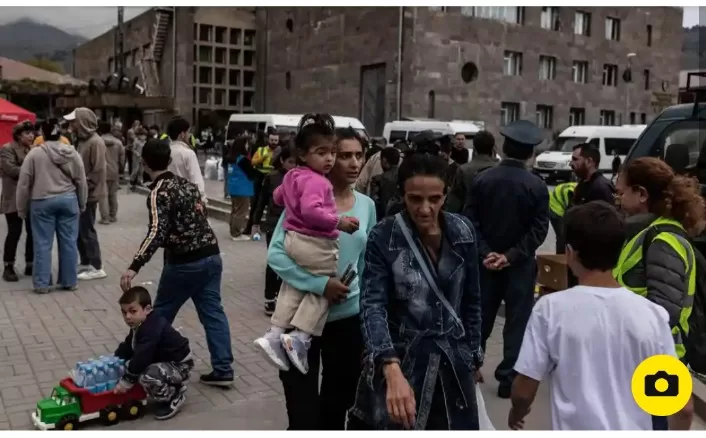Nagorno-Karabakh, a region once inhabited by ethnic Armenians, now stands largely deserted as the first United Nations mission in 30 years arrives to assess the dire humanitarian situation. Following a swift military operation by Azerbaijan, nearly the entire ethnic Armenian population has fled the mountainous region, leaving it eerily desolate.
Stephane Dujarric, the spokesperson for the UN secretary general, has indicated that the primary objective of this UN mission is to “identify the humanitarian needs” of both the remaining inhabitants and those displaced by the conflict.
Many of the Armenian refugees who managed to escape Nagorno-Karabakh express frustration that the international mission’s arrival appears too late to prevent their forced departure after Azerbaijan’s takeover of the region.
Aren Harutyunyan, a 53-year-old refugee now residing in Yerevan, bitterly criticized the “international community” for its perceived inaction, stating, “What is there left for the UN to monitor? No one is there anymore; everyone is gone, it’s a ghost town.”
Armenian authorities report that over 100,500 people, out of a population of approximately 120,000, have sought refuge in Armenia from Artsakh.
Visuals from the Al Jazeera TV channel depict an empty central square in Stepanakert, strewn with discarded debris, abandoned baby carriages, and children’s scooters, painting a stark picture of the region’s abandonment.
The dire situation has raised questions about the effectiveness of international monitoring, particularly during the months-long Azerbaijani blockade of the Lachin Corridor, the sole road connecting Nagorno-Karabakh to Armenia.
Hunan Tadevosyan, a spokesperson for Nagorno-Karabakh’s emergency services, reveals that only a handful of civilians remain in Stepanakert, highlighting the scale of the exodus.
Artak Beglaryan, a former Armenian separatist official, believes that “the last groups” of Nagorno-Karabakh residents are en route to Armenia, mostly comprising officials, emergency services personnel, volunteers, and individuals with special needs.
The mass departure of ethnic Armenians from Nagorno-Karabakh has led Armenian officials to accuse Azerbaijan of “ethnic cleansing,” a claim the Azerbaijani government vehemently denies, asserting that the Armenians’ departure was a “personal and individual decision.”
Armenia now faces the monumental task of accommodating the sudden influx of refugees, many of whom are “hungry, exhausted, and in need of immediate assistance,” according to the UN refugee agency.
For Tamara, a 35-year-old refugee, the emotional toll of leaving everything behind is profound. She explains, “It’s not just our house that we abandoned … It’s our history, who we are.” Tamara’s journey took her to Goris, near the Azerbaijani border, before reaching Yerevan, where she now shares a cramped living space with relatives.
Deep-rooted distrust and ethnic hatred, stemming from decades of conflict, underlie the decisions of many Armenians to leave Nagorno-Karabakh. Tamara’s decision to burn her family’s books and possessions, including an old piano, underscores the pervasive fear that cherished belongings might fall into Azerbaijani hands.
Azerbaijan, in response, has pledged to uphold “equal rights and freedoms” for all inhabitants of Nagorno-Karabakh, irrespective of their ethnicity, religion, or language.
However, the harrowing memories of previous conflicts, including graphic social media images of Azerbaijani soldiers desecrating corpses and executing prisoners, continue to fuel distrust among ethnic Armenians.
The recent arrests of high-profile officials from Nagorno-Karabakh by Azerbaijani authorities have further exacerbated these concerns. The international community watches closely as the situation unfolds, hoping for a resolution that ensures the safety and well-being of those affected by this ongoing conflict.




